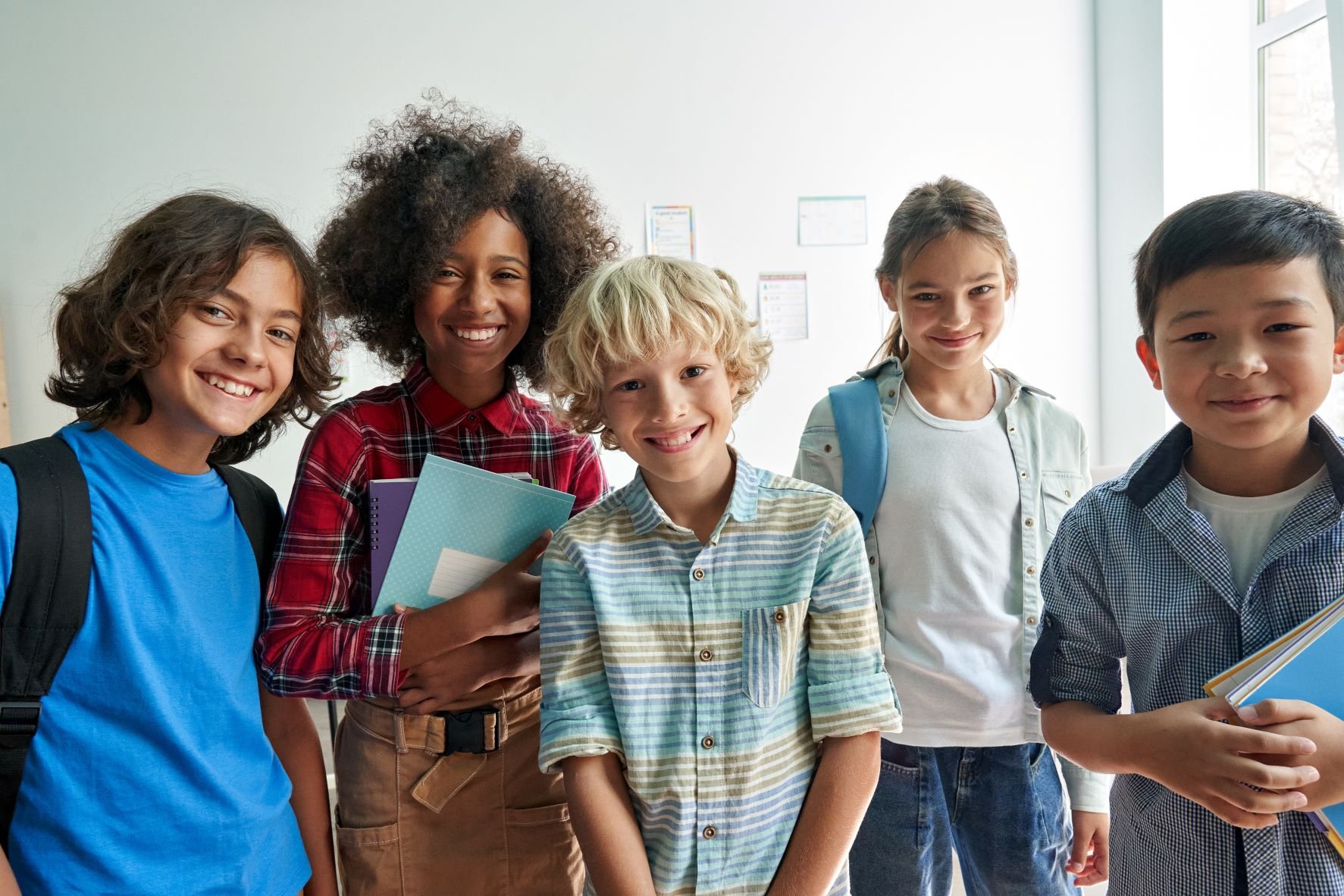How to Get Middle School Students Into Mindfulness
Mindfulness is for everyone, and that includes middle school students. But some middle school teachers may easily shy away from trying to implement mindfulness in their classrooms. Those who work with middle school students might worry about introducing things to their class that could be interpreted as “boring.” Without your students’ buy-in, a classroom mindfulness program has little chance of succeeding. So how can you present mindfulness to middle schoolers in a way that’s engaging and fun?
The good news is that mindfulness for middle school students does not necessarily have to include silence or stillness. There are many ways to practice mindfulness, and you may be surprised at how interested your middle school students are in these activities. Here are some tips to follow that will get your middle school students excited about mindfulness, along with 3 activities you can try in your classroom.
Why Should Middle School Students Practice Mindfulness?
There are a lot of difficult experiences that come along with being a middle schooler. It's a time in life when kids are going through a big transition: shifting from childhood into adolescence. Many middle school students face challenges like:
- Increasing academic pressure
- Relationship conflicts
- Hormonal changes related to puberty
- Bullying
- Self-image issues
To add to that, many middle schoolers also experience trauma. Reports estimate that around 40% of students will have to navigate at least one traumatic event before they graduate high school.
Mindfulness can help middle school students cope with life's difficulties and curveballs in a healthy way. By definition, mindfulness requires paying non-judgmental attention to each present moment. For today's middle-schoolers, many of whom may be used to distracting themselves from painful feelings, mindfulness may be a new, but helpful, challenge.
By paying attention to the present moment mindfully, kids (and adults!) learn how to identify and cope with their painful emotions.
Some additional benefits of mindfulness for middle school students include:
- Improving interpersonal relationships
- Increasing self-esteem
- Strengthening wise decision-making skills (decreasing impulsivity)
- Decreasing stress and anxiety
- Decreasing symptoms of depression
By introducing your middle school students to mindfulness, you are teaching them an essential skill that may benefit them throughout their lives.
How to Get Middle School Students Into Mindfulness

Deciding to introduce your middle school students to mindfulness is a great first step. But getting their buy-in may be another thing altogether. How can you get middle school students excited about mindfulness?
Here are some tips and ideas.
Lower your expectations
Expecting your middle school class to become perfectly peaceful after introducing them to mindfulness is bound to lead to disappointment and frustration for both you and them. Mindfulness isn’t a miracle potion, and it won’t “fix” all of your classroom’s “problems.” On top of that, sitting meditation -- or sitting quietly -- is only one practice within the realm of mindfulness. Mindfulness doesn't always involve sitting.
Mindfulness may not be a miracle, but it is an evidence-based practice that will help your kids become calmer and happier. And over 90% of the teachers who have utilized Calm Classroom’s mindfulness curriculum say that their students are calmer and more focused as a result of participating in the program. How mindfulness will look in your classroom may be different -- so make sure to have realistic expectations going into it.
Make it engaging
There is no better way to turn middle school students completely off from any classroom activity than to teach it in an uninteresting way. You are a middle school teacher, so you’re already the expert on how to make lesson plans interesting and engaging for your students.
Apply the same methods when you teach mindfulness. Play calming music, show videos of celebrities or athletes who practice mindfulness, or start a discussion about what students are already doing to manage stress to activate student voice. Most importantly, make it clear that you are excited about mindfulness and share about how it has benefitted you in your own life.
Explain the benefits
Getting middle school students’ buy-in may be easier if you first talk to them about the “why” of mindfulness. You may want to consider presenting your students with the science-based benefits of mindfulness for mental health. Explain to them that mindfulness has been proven by research to decrease depression and anxiety, and helps people feel happier overall.
Although it’s still undeniably present, mental health stigma is becoming weaker and weaker with each generation. If your middle schoolers are willing to talk about how they’d like their mental health to be supported, they might also be more willing to give mindfulness a try.
Give them a choice
Middle school students are in a unique stage in their development. This is a time in life when young people are starting the journey of figuring out who they are and where they belong in the world. During these years, many kids start making their own decisions for the first time.
Respect this important life stage by finding ways to offer your middle school students choices when it comes to these new mindfulness lessons. For example, invite them to choose between mindfulness and another activity for their SEL lesson. Giving them choices may help them come to mindfulness on their own instead of feeling forced.
3 Mindfulness Lesson Plans for Middle School Students
If you’re still feeling stuck on how to get started, here are 3 simple mindfulness lessons you can try with your middle school students. Remember to keep the above tips in mind, and present these lessons in the most engaging way possible.
Mindfulness of feelings
Pre-adolescents often have a lot of intense feelings -- and they may not know what to do with them. A mindfulness lesson focused on these feelings may be both interesting and helpful for your students.
You can help your students practice mindfulness of feelings by guiding them to journal or draw about what they’re currently feeling. Help them with emotion identification; teach them the vocabulary they can use to describe nuanced feeling states.
For a more structured activity, name different emotions, and ask your students to sit quietly to notice what each emotion brings up in them. Then, give them a specified amount of time to write or create art about each feeling.
Sensory nature walk
Your middle school students may appreciate the opportunity to leave their classroom and do something outside of their daily routine. Another engaging mindfulness activity for middle school is taking your classroom on a sensory nature walk.
Take your class outside. It’s okay if your campus is in a city or isn’t surrounded by much nature. Any place outside will do. Ask your students to simply follow you without speaking, and just notice their steps.
Then, ask them questions to invoke mindfulness of the senses. For example, what are some colors they see around them? What sounds do they hear? Ask them to go around campus and identify one thing they find beautiful.
Mindfulness with music
Middle school students often find their identity with music. Music can be a meaningful avenue for self-expression for young people, and you can use this to your advantage when teaching mindfulness.
You may choose a song to play for your class, or you can allow one of your students to choose a song. Ask your students to listen quietly as the song plays. Guide them to pay close attention to what feelings this song brings up in them.
You can ask your students to do individual assignments to describe their feelings about the song (using the instructions above) or you may opt for having a group discussion.
If you’re interested in guidance for implementing a mindfulness program at your middle school, get in touch with us at Calm Classroom today.





SIGN UP FOR OUR NEWSLETTER